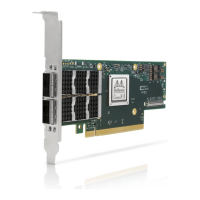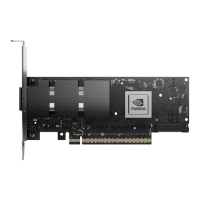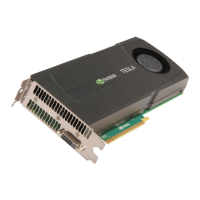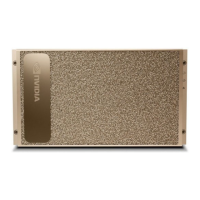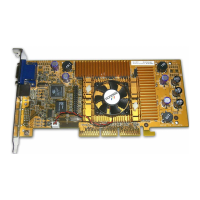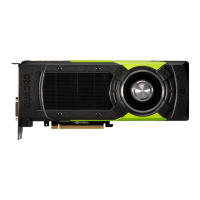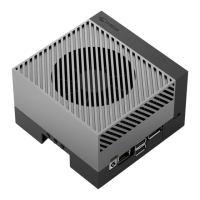•
•
•
The below bifurcation are optional for the adapter's x16 PCIe interface:
x1 PCIe x16, x1 PCIe x8, x1 PCIe x4
x2 PCIe x8, x2 PCIe x4, x2 PCIe x2, x2 PCIe x1
x4 PCIe x4, x4 PCIe x2, x4 PCIe x1
Multi-host capable cards also support Socket-Direct applications and work as regular Single-Host
cards, depending on the type of server they are plugged into, assuming the server complies with the
OCP 3.0 spec.
According to the OCP 3.0 spec, the adapter card advertises its capability through the PRSNTB[3:0]#
pins. The server determines the configuration through the BIF[2:0]# pins, which it drives to the
adapter card.
TheNVIDIA OCP3.0 card has an internal logic that uses the BIF[2:0]# data and determines the
correct operating mode to boot at. The combination of the PRSNTB[3:0]# and BIF[2:0]# pins
deterministically sets the PCIe lane width for a given combination of OCP 3.0 cards and baseboard.
The logic and the decoding table can be found in the OCP 3.0 spec (Chapter 3.5 PCIe Bifurcation
Mechanism.
For example:
the NVIDIA OCP 3.0 Multi-host adapter drives0100 on PRSNTB[3:0]# to the server.
If Server Drivers Adapter PCIe Mode
000 Single-Host Mode: x1 PCIe x16
001 Socket Direct Mode: x2 PCIe x8
010 Socket Direct Mode: x4 PCIe x4
101 Multi-Host Mode: x2 PCIe x8
110 Multi-Host Mode: x4 PCIe x4

